The answer is that it depends on the airline company. While many airlines still require female flight attendants to wear high heels as part of their uniform, there is no industry-wide requirement for this footwear. In recent years, some airlines have relaxed their dress codes to allow more comfortable shoes, such as sneakers or flats.
The use of high heels in flight attendant uniforms dates back to the early days of air travel, and was originally a holdover from the dress codes of registered nurses who were the first air stewards. It was believed that high heels would make female flight attendants look smart and presentable. However, as time has gone on, some have questioned the necessity of high heels and the potential hazards they can pose for flight attendants, such as foot and back pain, and difficulty moving quickly in the event of an emergency. This has led some airlines to rethink their dress code requirements and allow more comfortable shoes as part of their uniform.
Also Read: 15 Cabin Crew Career Progression Paths for Flight Attendants
Ultimately, the dress code requirements for female flight attendants will vary depending on the airline and where they operate. While many airlines still require high heels, others have relaxed their dress codes to allow more comfortable footwear.
Contents
- History
- Reasons Why Women Flight Attendants Wear High Heels
- High-Heeled Shoes and Cabin Shoes
- List of Airlines that Have Relaxed High Heel Shoe Dress Codes
- Video: Flight Attendant Shoes
- Frequently Asked Questions
- 1. Why do some female flight attendants wear high heels?
- 2. Are female flight attendants required to wear high heels at all airlines?
- 3. Are high heels a safety concern for flight attendants?
- 4. Can female flight attendants wear any type of high heels?
- 5. Are male flight attendants required to wear high heels?
- 6. Do high heels affect flight attendants’ ability to perform their duties?
- Summary
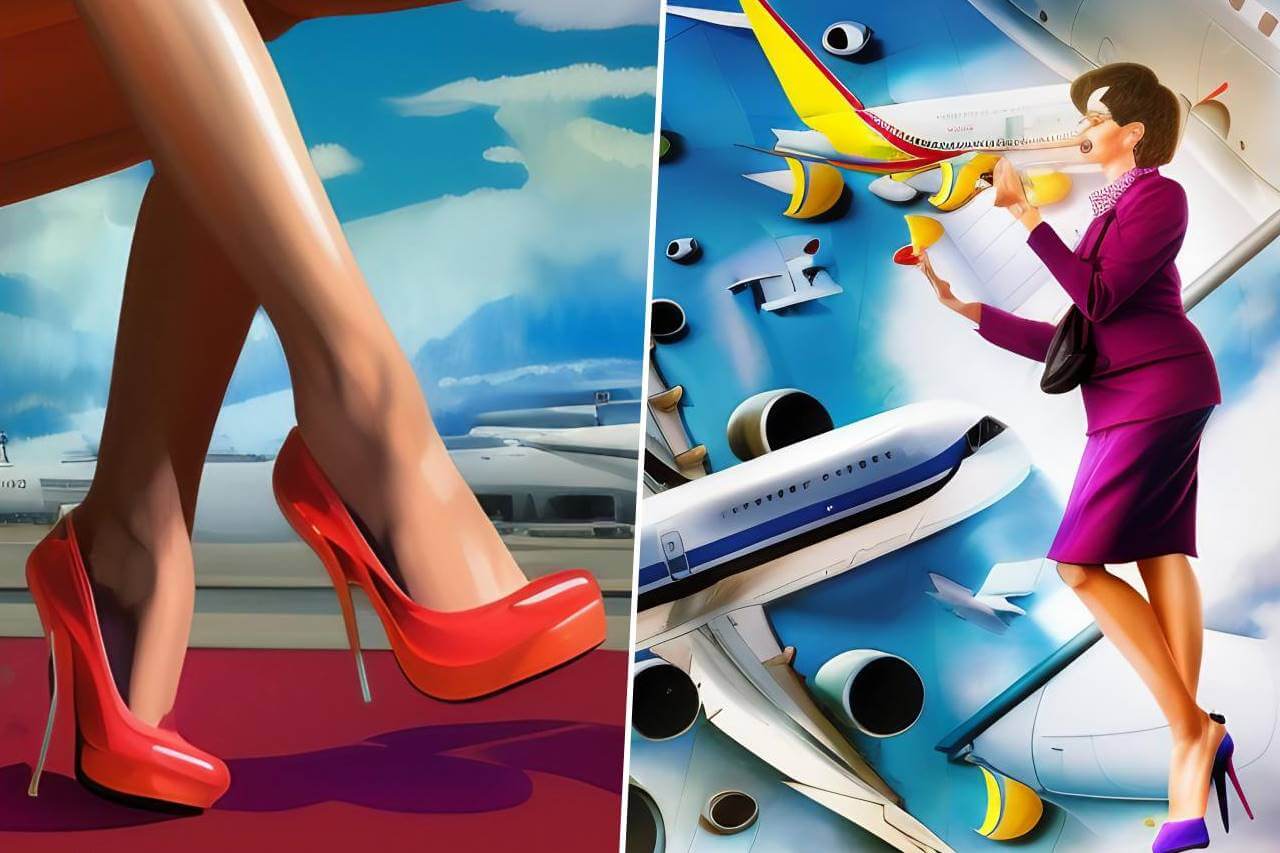
History
- The 1930s: The use of high heels as part of a flight attendant’s uniform can be traced back to the early days of commercial aviation in the 1930s and 1940s. At that time, airlines exclusively hired registered nurses as cabin crew, who were accustomed to wearing white uniforms and high heels for their work. Thus, the practice of requiring high heels as part of the cabin crew uniform was carried over from nursing dress codes.
- The 1960s: As the airline industry evolved and non-nursing personnel began to be hired for cabin crew roles, high heels remained a staple of the uniform for female flight attendants. In the 1960s and 1970s, when airlines began to focus on branding and image to appeal to travelers, high heels became a critical component of the flight attendant uniform. Uniform designers believed that high heels made a female flight attendant look taller, slimmer, and more polished, which aligned with the airlines’ goal of presenting a sleek, professional image.
- The 2020s: In recent years, as the airline industry has become more competitive and labor regulations have evolved, some airlines have relaxed their dress codes to allow more comfortable footwear. Many airlines have dropped the high heel requirement or have stipulated lower heel heights. Some airlines have also introduced different shoe options, such as sneakers or other athletic footwear, as part of the uniform, especially for long-haul flights.
This evolution in dress code requirements suggests an ongoing shift in priorities for flight attendant uniforms, from emphasizing style and traditional images to accommodating comfort and practicality. Nevertheless, high heels remain a key aspect of many flight attendant uniforms and continue to be seen as an important component of an airline’s visual brand.
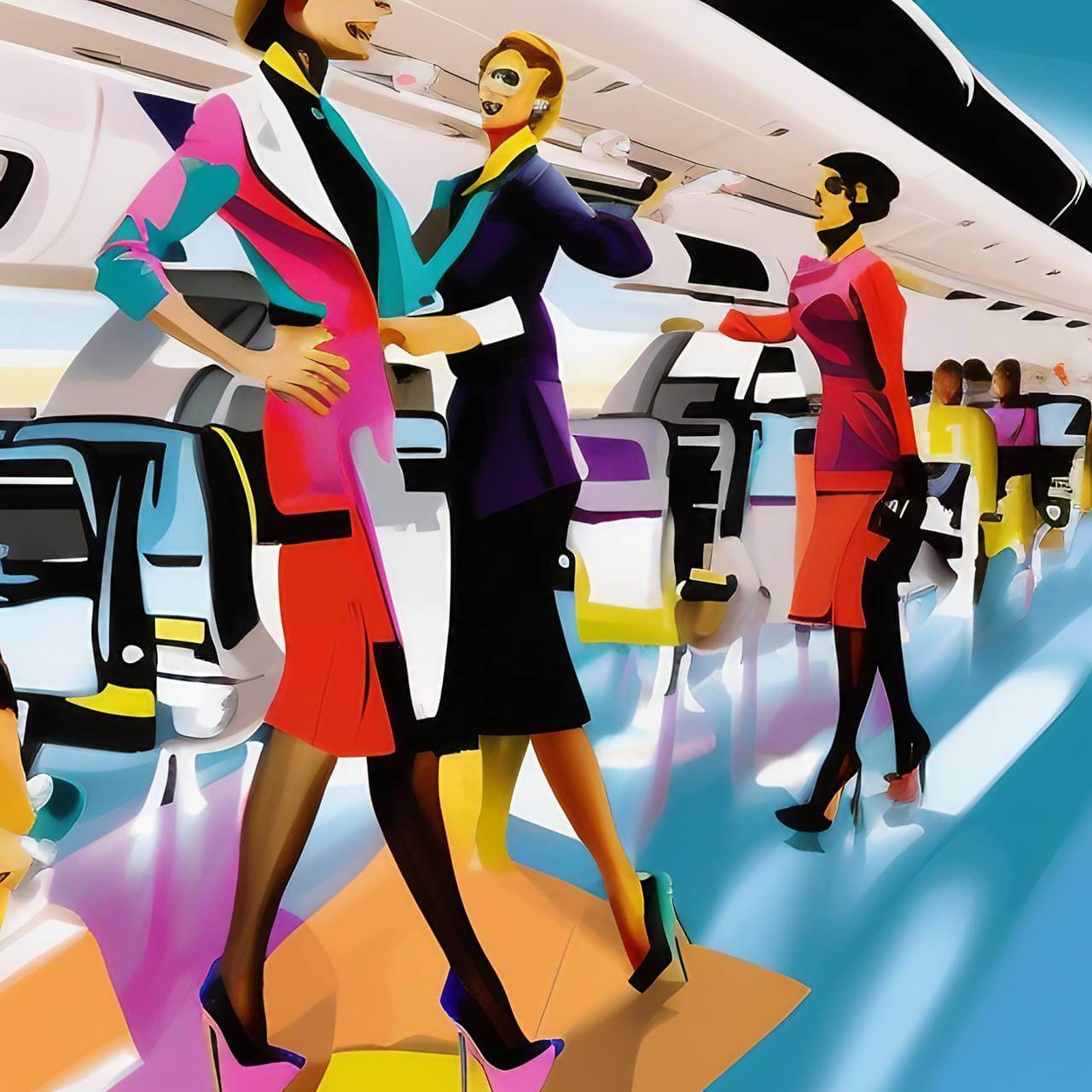
Reasons Why Women Flight Attendants Wear High Heels
You may have noticed that many female flight attendants wear high heels as part of their uniforms. Have you ever wondered why this is the case? There are actually several reasons why airlines require their female flight attendants to wear heels, and some of them may surprise you.
1. Aesthetic Appeal / Visual Importance / Brand Image
Let’s face it – high heels look good. They elongate the legs, give the wearer a confident posture, and make a professional outfit look even more polished. Many airlines place a high value on their visual branding and want their employees to look their best when representing the company. The use of high heels in cabin crew uniforms can be seen as a way to enhance this appeal. High heels can convey a sense of elegance, sophistication, and professionalism, which is often an important component of an airline’s branding efforts.
In fact, some airlines have specifically designed their cabin crew uniforms to be more fashionable and visually appealing as part of their broader marketing efforts. For example, Emirates Airlines is known for its stylish and glamorous flight attendant uniforms, which feature high heels as part of the look. The use of high heels in flight attendant uniforms are also seen as a way to differentiate airlines from one another. Each airline may have its own preferred style, color, or material for its uniforms, including shoes. Some airlines have even used their uniform design as a way to promote national or cultural identity, while others have focused on a specific brand image or message.
2. Uniformity
Airlines often require their employees to adhere to strict uniform requirements, and this includes footwear. By standardizing the dress code, airlines can create a cohesive look and ensure that passengers recognize flight attendants as members of the airline’s staff. High heels may be preferred by some airlines because they can create a consistent and unified look for flight attendants. This consistency can make it easier for passengers to identify flight attendants as members of a particular airline’s staff, which helps to reinforce the airline’s brand image.
3. Tradition
Believe it or not, the use of high heels as part of a flight attendant’s uniform dates back to the early days of air travel. In the 1930s and 1940s, airlines used to hire only registered nurses as flight attendants. Nurses were often required to wear high heels and white uniforms, which carried over to the flight attendant uniform when airlines started hiring non-medical personnel.
Overall, while the use of high heels in flight attendant uniforms is not a requirement for all airlines, it remains an important part of the brand image and marketing efforts for many. From conveying elegance and sophistication to reinforcing brand identity and consistency, high heels are just one of many visual elements that make up airline branding.
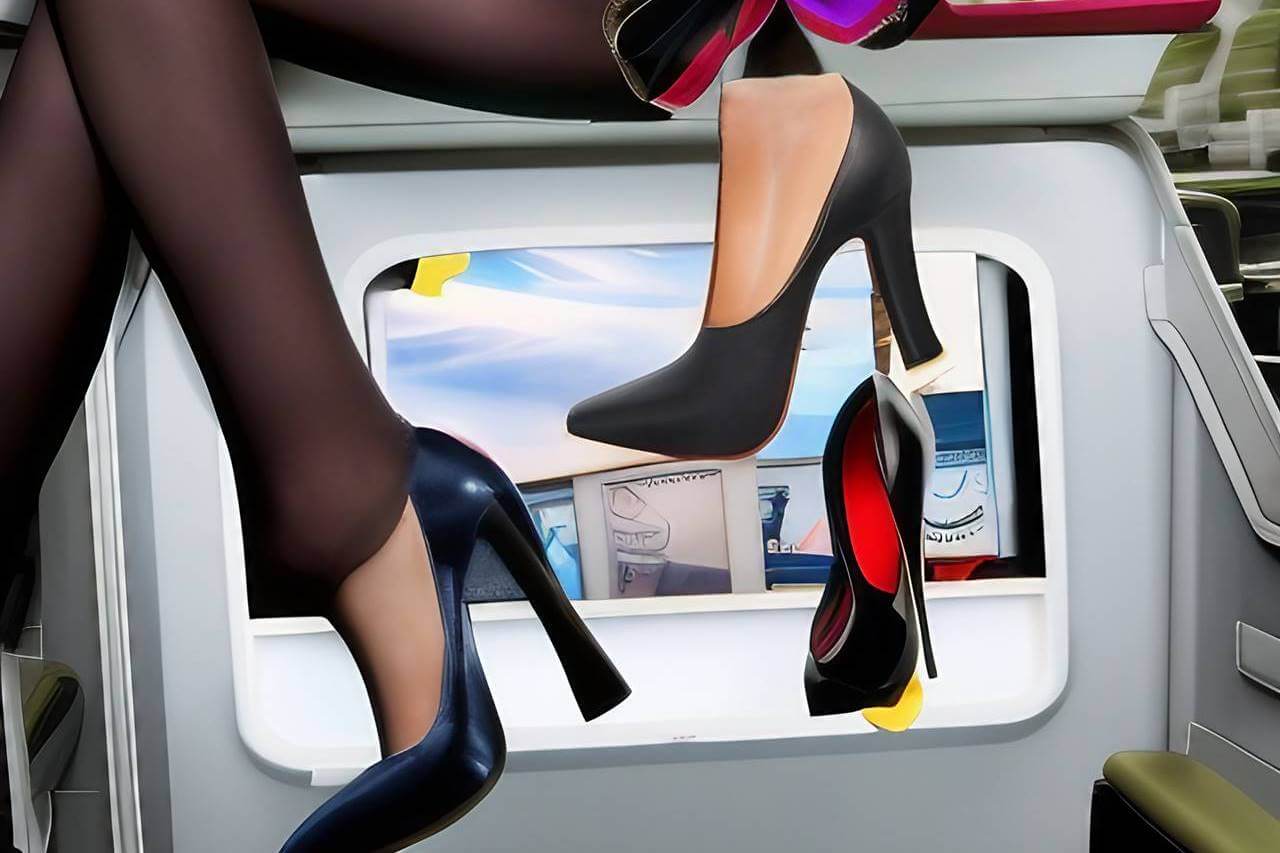
High-Heeled Shoes and Cabin Shoes
Flight attendants I’m familiar with typically use two pairs of shoes: stylish high heels for when they board passengers and walk through the airport, as it is usually mandated by their organization (although many Western airlines are moving away from this), as well as a pair of low heeled shoes to make work onboard much more comfortable.
The high heel shoes are used especially when the flight attendant is at the airport going to the plane. But when the plane takes off, they switch to cabin shoes (flat shoes) to be used while they are on duty inside the plane.
This switch from high-heel shoes to flat cabin shoes is typical especially in long-haul flights because of the comfort it brings to the flight attendants. Cabin shoes are also required to be slip-resistant as they need to walk or stand on wet surfaces inside the aircraft (aisles and bathrooms).
In summary, high-heeled shoes may be used by cabin crews for their visual appeal but flat cabin shoes are a must for longer flights due to their comfort and safety features. It is important that cabin crew choose their shoes wisely, taking into account both style and practicality. It is equally important to take proper care of these shoes in order to make them last longer.
While cabin shoes may not be as stylish as high heels, they can still provide a professional look. Furthermore, many airlines have begun introducing more fashionable options for cabin shoes that have become popular among flight attendants. Overall, it is important for airline companies to consider both style and practicality when selecting uniforms for
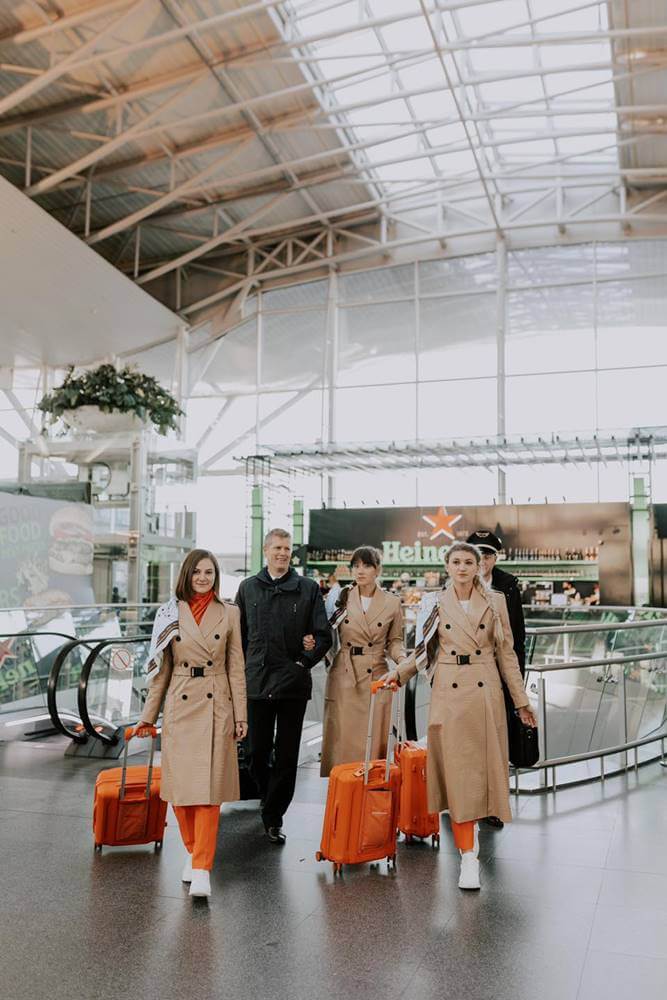
List of Airlines that Have Relaxed High Heel Shoe Dress Codes
While most airlines require female flight attendants to wear high heels, here are a few airlines that have relaxed their dress codes and no longer require high heels as part of their uniform:
It’s worth noting that some of these airlines still require a specific type of shoe, such as a ballet flat or a low heel, rather than high heels. Additionally, dress codes can vary depending on the route or type of flight, so it’s important to check with each airline for their specific requirements.
- Norwegian Air (Norway) – In 2019, Norwegian Air relaxed its dress code and no longer requires female flight attendants to wear high heels. Instead, they are allowed to wear comfortable shoes, such as sneakers or flats, during the flight.
- Air Canada (Canada) – In 2018, Air Canada responded to the worries of their female flight attendants by updating their uniform policy and giving them the option to choose between heels or flats. Many employees had communicated that wearing heels for long hours caused discomfort and health issues, so this change was implemented in order to create a more comfortable work environment.
- Virgin Atlantic (UK) – In 2019, Virgin Atlantic announced an empowering action: that their female cabin crew would no longer need to wear high heels and makeup as part of their uniform. This initiative is just one example of how this company continues to strive for gender equality in its workplace!
- American Airlines (USA) – Recently, an update to the dress code has enabled female flight attendants to don pants and comfortable yet practical footwear like sneakers or loafers.
- Aero K (Korea) – Aero K has rolled out comfortable sneakers as part of the cabin crew uniform.
- SkyUp Airlines (Ukraine) – In October 2021, SkyUp Airlines’ female staff can now choose to wear sneakers and trousers
- Delta Airlines (USA) – Delta’s uniform policy requires female flight attendants to wear black leather dress shoes with a heel no higher than 2 inches.
- Ultra Airlines (Colombia) – Ultra Airlines uniform shoes are white sneakers with orange shoelaces.
- JAL Japan Airlines (Japan) – In March 2022, JAL has become one of the first big Japanese companies to relax its guidelines concerning footwear. No longer is it required that women must wear high heels – a measure which was often uncomfortable and caused unnecessary distress.
- Akasa Air (India) – In 2022, Akasa Air has swapped its uniform high heels with comfortable sneakers.
- PLAY (Iceland) – In 2021, Play Airlines from Iceland recently launched a non-gender-specific uniform collection featuring boxy blazers and pants, paired with comfortable sneakers instead of classic high heels or brogues.
- ZipAir (Japan) – In 2019, sneakers were introduced to this airline based in Japan as their ability to reduce fatigue and enhance mobility was prioritized.
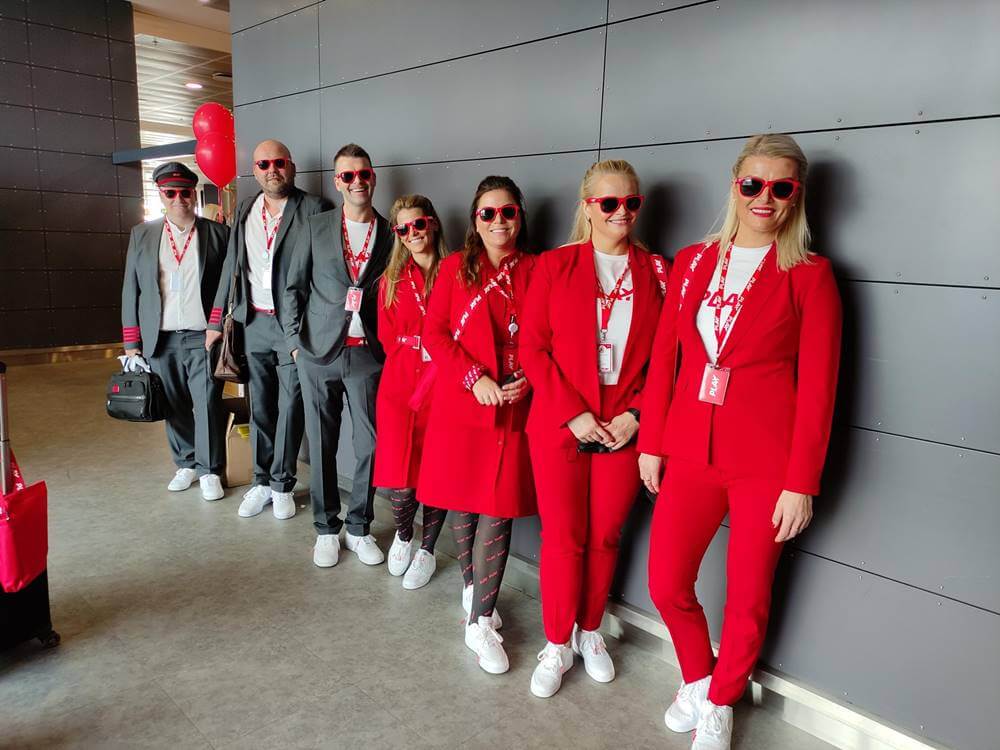
Video: Flight Attendant Shoes
Noelle from The Daily Departure, a Chicago-based flight attendant and YouTuber, shares some of her favorite heels and flats for flight attendants.
Frequently Asked Questions
1. Why do some female flight attendants wear high heels?
Some airlines require their female flight attendants to wear high heels as part of their uniform for various reasons, such as aesthetic appeal, safety concerns, uniformity, and tradition.
2. Are female flight attendants required to wear high heels at all airlines?
No, not all airlines require female flight attendants to wear high heels. Some airlines have relaxed their dress codes to allow more comfortable footwear, such as flats or low-heeled shoes.
3. Are high heels a safety concern for flight attendants?
While high heels can be challenging and uncomfortable footwear, they can also provide better traction on a slippery cabin floor or in the event of turbulence. However, some airlines have recognized the potential hazards and discomfort that high heels can pose and have allowed other types of shoes for their female flight attendants.
4. Can female flight attendants wear any type of high heels?
Many airlines have specific guidelines for their female flight attendants’ footwear, including the type of shoe, heel height, and color. It’s important to check with the airline about their dress code requirements to ensure compliance.
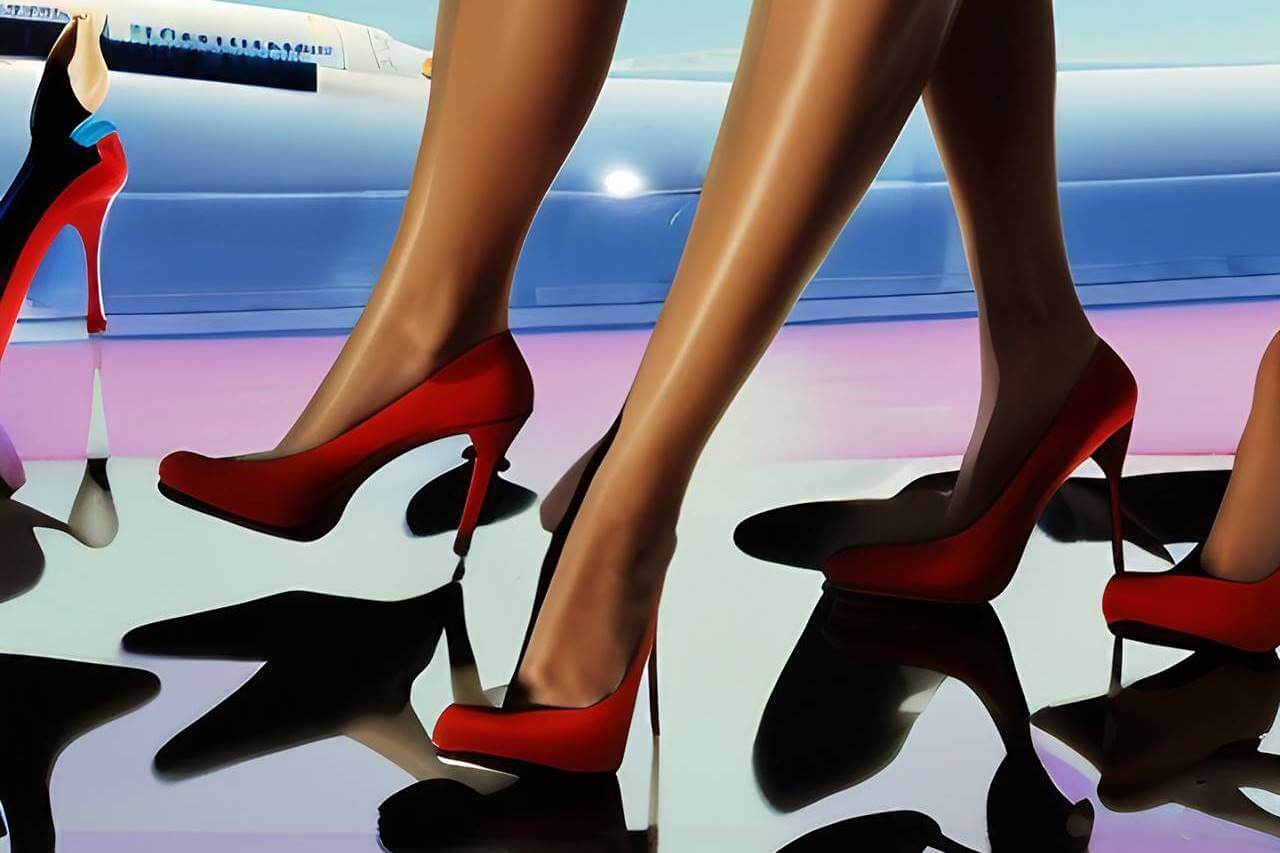
5. Are male flight attendants required to wear high heels?
No, male flight attendants are not required to wear high heels as part of their uniform. Be advised that there are some open airlines that have become gender-neutral (especially in USA and Europe). They have opened up to certain gender-neutral rules and regulations, and even allow tattoos, earrings (for men), noserings, and transgender people to wear a uniform that they’re more comfortable with.
6. Do high heels affect flight attendants’ ability to perform their duties?
Wearing high heels can be a personal preference, and some flight attendants may feel more comfortable and confident in them. However, if high heels cause discomfort or hinder a flight attendant’s ability to perform their duties, they may not be the best choice of footwear. There are some airlines like Emirates and Etihad (in the Middle East) that provide two types of shoes for their cabin crew. They switch these shoes according to their duties. They wear flat and comfortable shoes after the planes take off and switch back to heeled shoes before the plane lands.
It’s worth noting that dress code requirements are subject to change, so it’s always a good idea to check with the airline for the most up-to-date information.
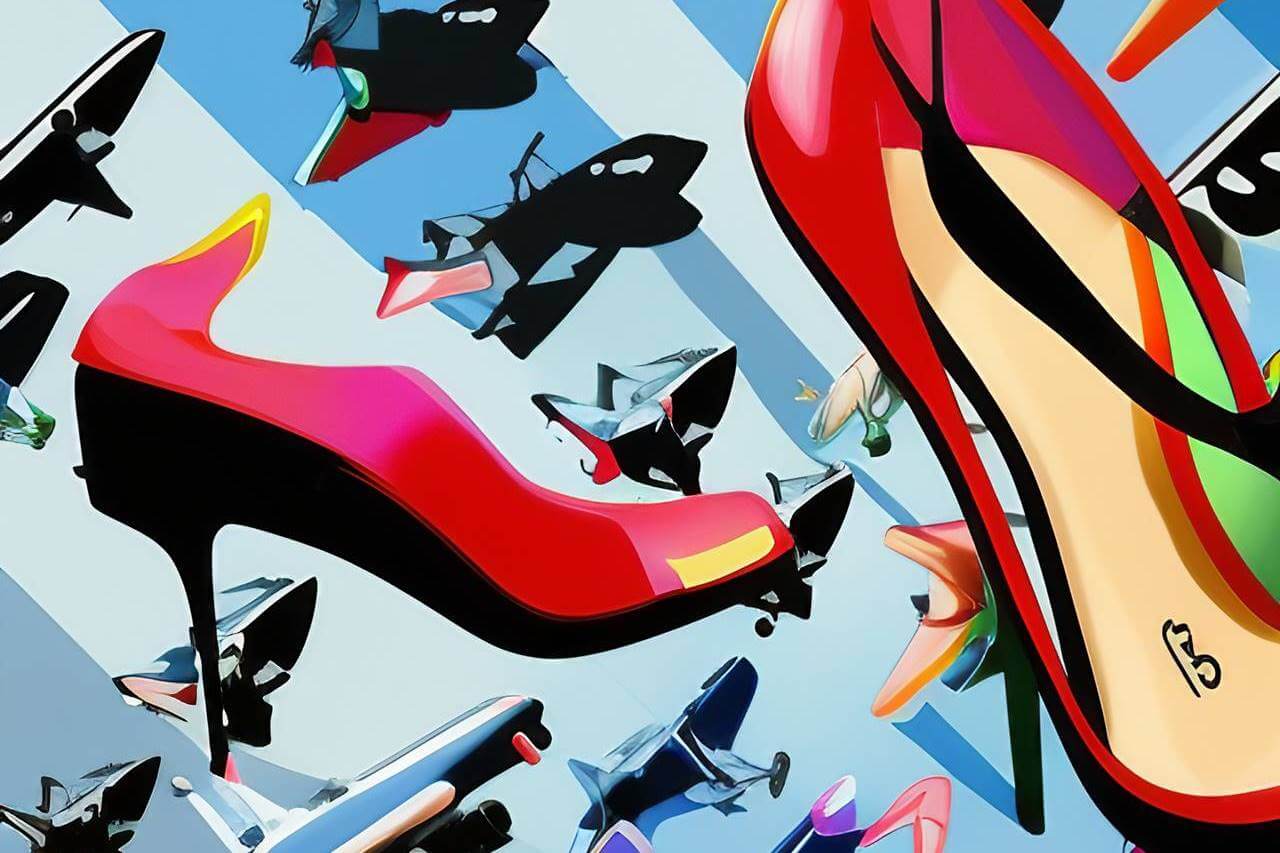
Summary
In conclusion, the choice of footwear for flight attendants is an important factor in providing a safe and comfortable experience. While some airlines still require female flight attendants to wear high heels as part of their uniform, many have relaxed their dress codes to allow more comfortable options such as flats or low-heeled shoes. Some even provide two types of shoes for cabin crew depending on the duties they are performing onboard.
Ultimately, it’s up to each airline to decide what type of footwear is appropriate and necessary for its employees; however, comfort should always be prioritized over style when choosing which pair will suit you best.